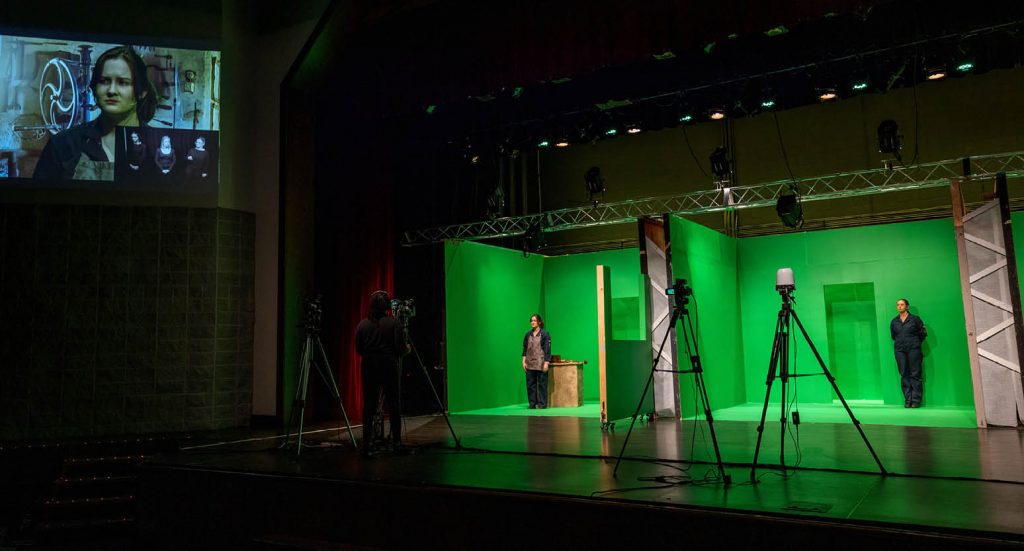Pandemic Creativity Leads to New Theatre Medium

March 25-27, Bethel University’s Theater department performed Flux and The Obelisk, a pair of one-act plays written by junior Autumn Owens, a double major in theatre and business. After navigating an entirely virtual show through their 2020 production of Twelfth Night, the department sought a way to allow the actors to practice physical distancing while still interacting with each other on stage. How was this accomplished? Two words: green screen.
The idea came to Stacy Bone ‘04, the show’s scenic and lighting designer, who had considered working with green screen ever since the pandemic first hit.
Seth Cole ’19, video director for the production, explains: “We were just trying to figure out how we keep actors separated without masks, and how we make [the scene] look identical. We wanted the actors to be in separate spaces but appear as if they were all in the same space acting together, and that’s what we pulled off with green screen.”
So, for the show, the Everest-Rohrer Auditorium stage donned three separate rooms entirely wrapped in green screen, with props to match. Each room had two cameras, providing both wide-shot and close-up options. Cast member Elaine Hooley, a junior graphic design major, designed graphics that overlapped the green screen, setting the scene. The live shots were then layered together with the graphics to give the illusion that the actors were interacting with each other in the same room.
Using the green screen method required extreme attention to detail from the cast and crew. Throughout rehearsals, Owens rewrote aspects of both plays, with The Obelisk posing more of a challenge in consolidating the onstage presence from eight characters to three. “I challenged myself by writing a lot of [the characters] into voiceovers,” Owens says.
For Adam Foster, a junior liberal arts major, who directed The Obelisk, the main challenge was training the cast to act with each other when, in reality, they were acting to a camera. Foster describes the added difficulty due to the layered video with green screen.
If the actors’ positioning was off even a little, then they might overlap with another character and throw off the scene. “The actors had to be very technical in order to hit the same mark every single time,” he says.
The show was a hit, giving the audience the option to experience the play via livestream or in person.
“I’m extremely thankful that the Theatre Department is willing to take risks like this,” Foster says. “We created theatre in a new medium, a unique medium, against a variety of obstacles.”
